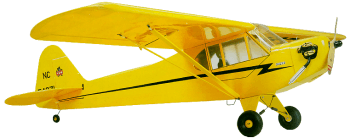Design team members: J.Robert Habjan-Skringer, Stephen McCullough, Peter Parahuz
Supervisor: David Clausi
Project background
For millennia a person’s perception of the world around them was limited to what their eyes alone revealed to them. However, with the advent of the camera, the airplane, and more recently satellites, man has been able to expand his limited senses through technology. Using high-resolution imagery (not necessarily in the visible spectrum) and sophisticated image processing techniques a wealth of information can be extracted from a simple image. Such information is already utilized by a myriad of industries from environmentalists tracking the melting of the polar caps to geologists looking for still more crude oil.
Presently the majority of remote sensing is performed on a large-scale, employing satellites or full size aircraft. However, these often do not provide the resolution required for some tasks. Additionally, technologies able to meet these requirements are prohibitively expensive, limiting their application to governmental agencies or large corporations. In order to resolve these limitations, an inexpensive, small-scale ‘micro-sensing’ platform is required, capable of producing high-resolution imagery. Furthermore, in order to fill this niche, the platform should be easy to use, be comprised of replaceable off-the-shelf components, and provide flexibility in its sensing technologies. Applications ideally suited for such a platform include:
· Personal/corporate property evaluation/inspection
· Determination of the composition of wood lots
· The creation of accurate 3D models of buildings
System description
The Corporate R&D department of General Electric has proposed (and has agreed to fund) an investigation into the feasibility of using a remote controlled aircraft as a sensing platform. In order to accomplish these goals the system will consist of five functional groups:
· Flight hardware
· Image capturing hardware
· Video signal transmission hardware
· Surface display system
· Video storage hardware
The flight hardware will consist of an RC plane and a wireless transmitter to control the flight path of the plane. After careful analysis, it was decided that a digital camcorder mounted inside the aircraft provided the ideal solution to the problem. Listed below are the components chosen for the system.
The aircraft
The aircraft, being the platform for sensing, is one of the most critical components in the system. It must be able to carry a camera, transmitter, and powering equipment along with the regular components for a minimum of 20 minutes. Of primary concern when selecting the plane was its stability and ease of construction. A stable plane will result in a video signal that is uniform in direction and angle. A stable plane will additionally facilitate its operation by novice pilots. Another criterion the plane must comply with is its size. It must be easily transported within a passenger car. Several planes were evaluated and the J-3 Piper Cub (ARF RC Airplane) was determined to be the best option.

HANGAR 9 J-3 Piper Cub
Image capture/storage system
Several cameras were considered for the imaging capabilities of RASP. The key criterion was the ability to capture 30 fps of progressive scan video, a format that reduces distortion typical in filming objects at high speed. It was found that several consumer grade digital camcorders provided the necessary features at an excellent price point. An additional advantage is that the video is stored in a loss-less format in a compact form.